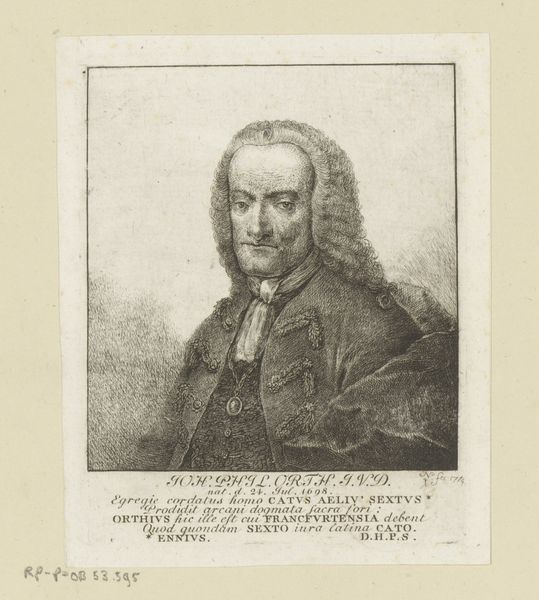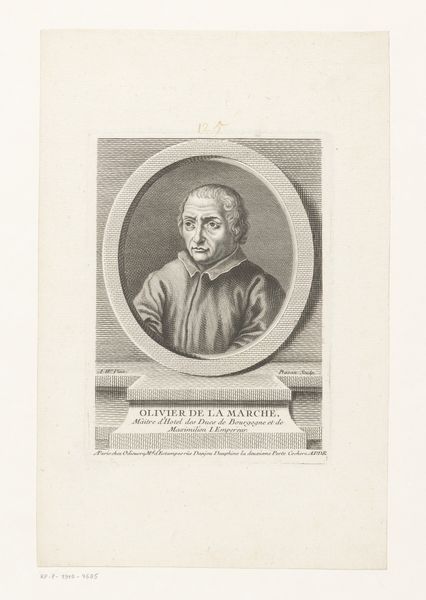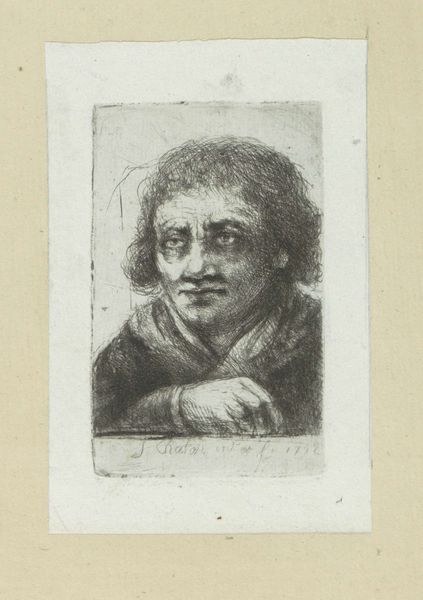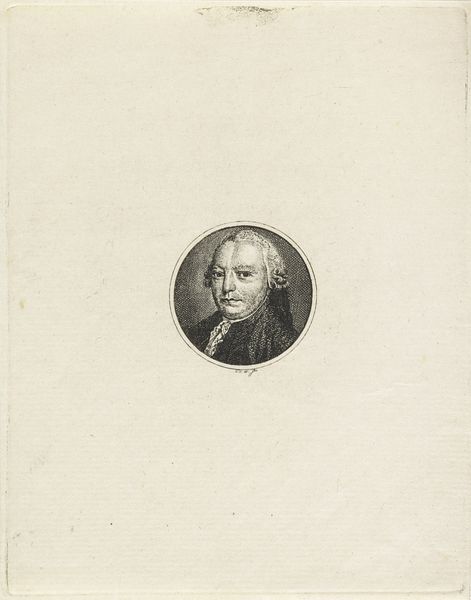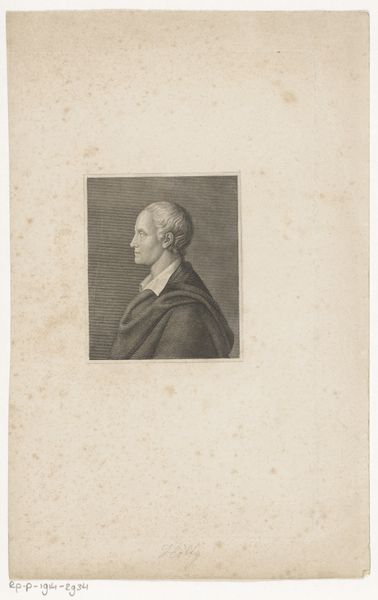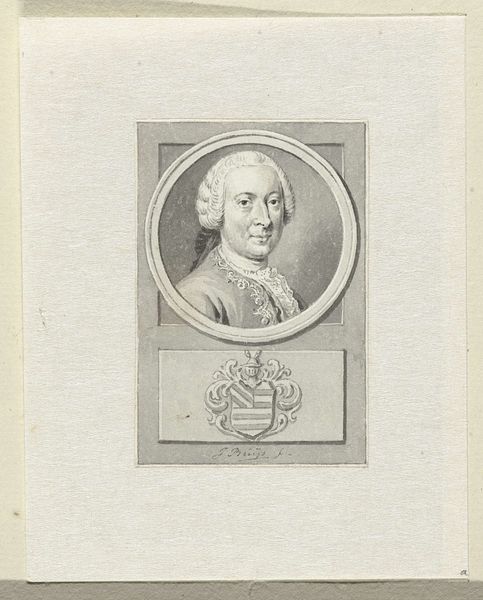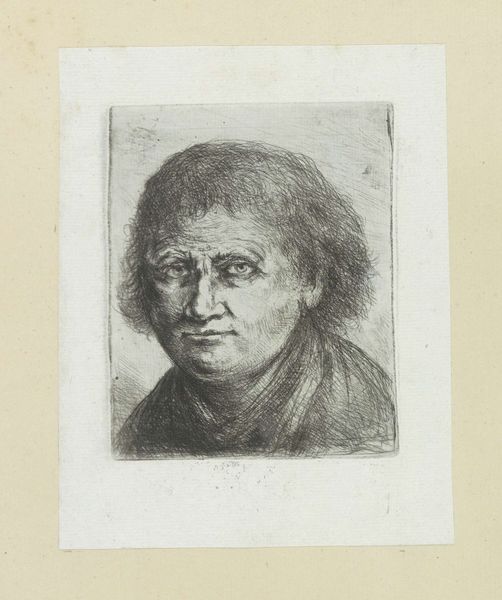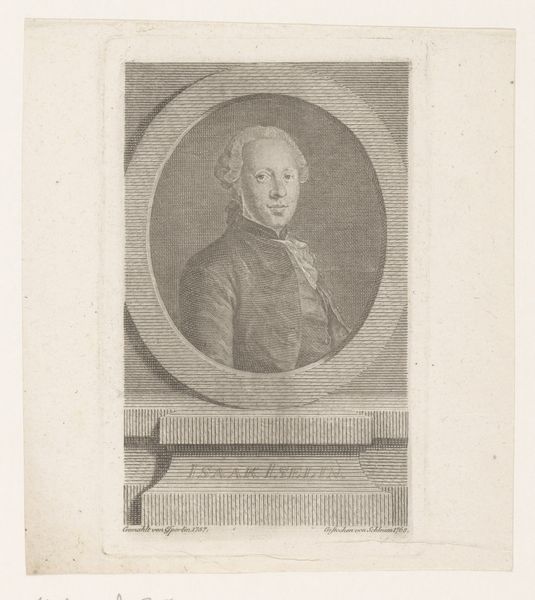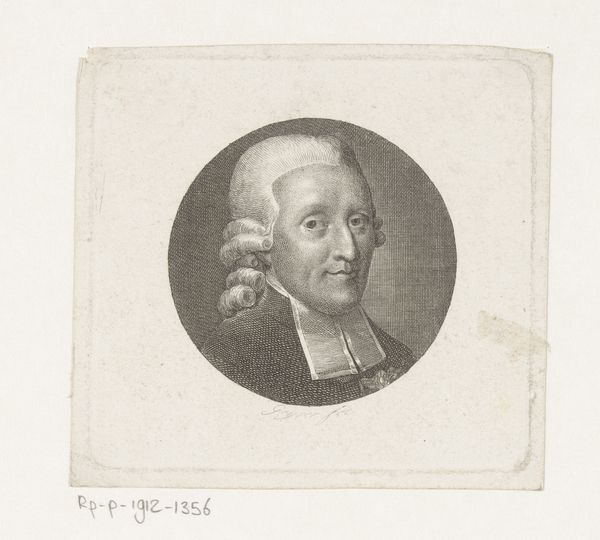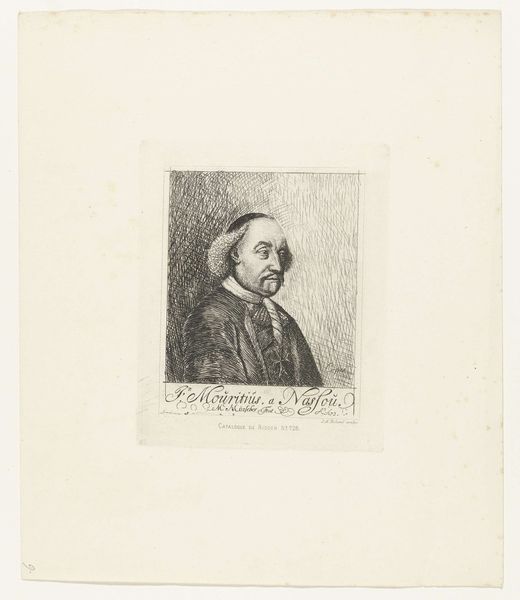
drawing, engraving
#
portrait
#
drawing
#
self-portrait
#
neoclassicism
#
charcoal drawing
#
portrait reference
#
portrait drawing
#
tonal art
#
engraving
Dimensions: height 174 mm, width 140 mm
Copyright: Rijks Museum: Open Domain
Jan Chalon’s self-portrait, etched in 1778, encapsulates the spirit of the Enlightenment through its unique framing. The oval frame, reminiscent of classical portraiture, encloses Chalon, positioning him within a tradition of intellectual and artistic eminence. The gaze, however, breaks convention. It is direct and challenging. This is where the classical motif is brought into the modern age of individualism. Think of ancient Roman busts, often idealized. Here, Chalon presents himself with an almost unsettling realism. It reminds me of Rembrandt’s self-portraits, where the artist unflinchingly examines his own aging face, or even the stern visages found on Renaissance death masks, used to preserve the likeness of the deceased. There's a potent psychological element at play, that desire to capture and confront the self. It speaks to a human urge to arrest time, to leave a lasting impression on the world. The artistic endeavor becomes a timeless echo through the ages.
Comments
No comments
Be the first to comment and join the conversation on the ultimate creative platform.



